-
Seed Shop
-
Feminized
Cannabis seeds -
Autoflowering
Cannabis Seeds -
Regular
Cannabis Seeds -
F1 Hybrid
Cannabis Seeds -
CBD
Cannabis Seeds -
Zamnesia
Cannabis Seeds
-
Top 10’s
- Top 10 Feminized Seeds
- Top 10 Autoflowering Seeds
- Top 10 Regular Seeds
- Top 10 USA Cannabis Strains
-
Favourites
- Beginner Strains
- Below 1% THC
- Classic Cannabis Strains
- Cup Winners
- F1 Hybrids
- Fast Flowering Seeds
- High CBD Strains
- High THC Strains
- Mix Packs
- Zamnesia Exclusive Collabs
-
-
Headshop
-
Vaporshop
- Spare Parts & Accessories
- AirVape XS GO (2021)
- Arizer Air MAX
- Arizer Extreme Q
- Arizer Solo 2
- Arizer V-Tower
- Arizer XQ2
- Boundless CFC 2.0 Vaporizer
- Boundless CFX
- Boundless TERA (V3)
- CRAFTY+
- DaVinci IQC
- Dr. Dabber Boost EVO
- DynaVap VapCap "M" PLUS 2023
- DynaVap VonG (i) Titanium
- Flowermate Aura
- Flowermate Cap Pro
- Flowermate Slick
- Flowermate V5.0S Pro
-
Healthshop
-
Smartshop
-
Shroomshop
-
Growshop
-
Seed Shop
All CategoriesSeed Shop
- Autoflower Seeds
- Feminized Cannabis Seeds
- Zamnesia Seeds
- Zamnesia's Top 10
- CBD Seeds
- F1 Hybrids
- Seed Banks
- Mix Packs
-
Popular Strain Types
- Zamnesia Exclusive Collabs
- Classic Cannabis Strains
- Amnesia Seeds
- Haze Seeds
- Skunk Seeds
- Kush Seeds
- Purple Seeds
- Blueberry Seeds
- Cheese Seeds
- Diesel Seeds
- White Widow Seeds
- Gorilla Seeds
- Northern Lights Seeds
- Granddaddy Purple Seeds
- OG Kush Seeds
- Blue Dream Seeds
- Lemon Haze Seeds
- Bruce Banner Seeds
- Gelato Seeds
- Sour Diesel Seeds
- Jack Herer Seeds
- Girl Scout Cookies Seeds (GSC)
- Wedding Cake Seeds
- Zkittlez Seeds
- Pineapple Express Seeds
- Chemdawg Seeds
- Hindu Kush Seeds
- Mimosa Seeds
- Cup Winners
- F1 Hybrids
- Mix Packs
- Beginner Strains
- High THC Strains
- Fast Flowering Seeds
- Regular Cannabis Seeds
- USA Cannabis Strains
- Cup Winners
- Seedfinder
-
Vaporshop
All CategoriesVaporshop
- Top 10 Vaporizers
- Spare Parts & Accessories
- AirVape XS GO (2021)
- Arizer Air MAX
- Arizer Extreme Q
- Arizer Solo 2
- Arizer V-Tower
- Arizer XQ2
- Boundless CFC 2.0 Vaporizer
- Boundless CFX
- Boundless TERA (V3)
- CRAFTY+
- DaVinci IQC
- Dr. Dabber Boost EVO
- DynaVap VapCap "M" PLUS 2023
- DynaVap VonG (i) Titanium
- Flowermate Aura
- Flowermate Cap Pro
- Flowermate Slick
- Flowermate V5.0S Pro
- G Pen Elite II
- G Pen Micro+
- G Pen Roam
- Hyer Big-E Rig
- MIGHTY+
- PAX Mini
- PAX Plus
- PLENTY
- Puffco Peak Smart Rig
- Puffco Plus
- Storm Vaporizer
- The Proxy (Puffco)
- VOLCANO CLASSIC
- VOLCANO HYBRID
- Vapman 2.0
- Vapman Click
-
Smartshop
All CategoriesSmartshop
- Top 10 Smartshop
- Zamnesia Gift Cards
- After Party
- Aphrodisiacs
- Aromatherapy
- Blue Lotus
- CBD Vape Juice
- Capsule Machines
- Crystals, Gemstones & Minerals
- Dream Herbs
- Drug Tests
- Extracts
- Happy Caps
- Herbal Tea
- Herbs & Seeds
- Incense
- Kanna
- Kratom
- LSA Seeds
- Mescaline Cacti
- Microdosing
- Nootropics
- Relaxing
- Salvia divinorum
- Smart Seeds
- Stimulants
- Supplements
- Tinctures
- Vape Herbs
-
TRIBE
All CategoriesTRIBE
- My Membership
- Spend Gift Points
- TRIBE Sale
- Exclusive products
- Earn Extra Gift Points
-
TRIBE
- Early Access
- Refer a Friend
- Information
-
TRIBE
-
Language
 United States
United States
Friday, 12 December and Thursday, 18 December 2025*


- 30 gr decarboxylated cannabis buds
- 500 ml high-proof alcohol (such as grain alcohol or Everclear), or food-grade glycerine (for a non-alcoholic tincture)
- Optional flavourings: vanilla, citrus peel, cinnamon sticks, or other botanicals for a customised taste
- Grinder
- Baking tray lined with parchment paper
- Oven (for decarboxylation)
- Mason jars with lids
- Cheesecloth or coffee filters (for straining)
- Funnel
- Dark glass dropper bottles (for storage and accurate dosing)
- Measuring cup and/or digital scale
Looking for a simple way to create your own cannabis extracts? Tinctures are a classic option that fit seamlessly into any routine, offering a flexible base for a variety of homemade products. With just a few basic ingredients, you can craft potent, long-lasting tinctures tailored to your taste.
Weed tinctures are discreet, versatile, and surprisingly easy to make from home. In this article, we’ll show you how to make cannabis tinctures with grain alcohol or Everclear, as well as using non-alcoholic alternatives based on glycerine.
Step-by-step recipe
After gathering these ingredients and tools, making your weed tincture follows a simple distillation process. If you’re wondering how to make a cannabis tincture with Everclear, the process is the same; just swap out the grain alcohol. Some users also prefer to mix both alcohol and glycerine for a mixed tincture.
Step 1: Decarb your cannabis
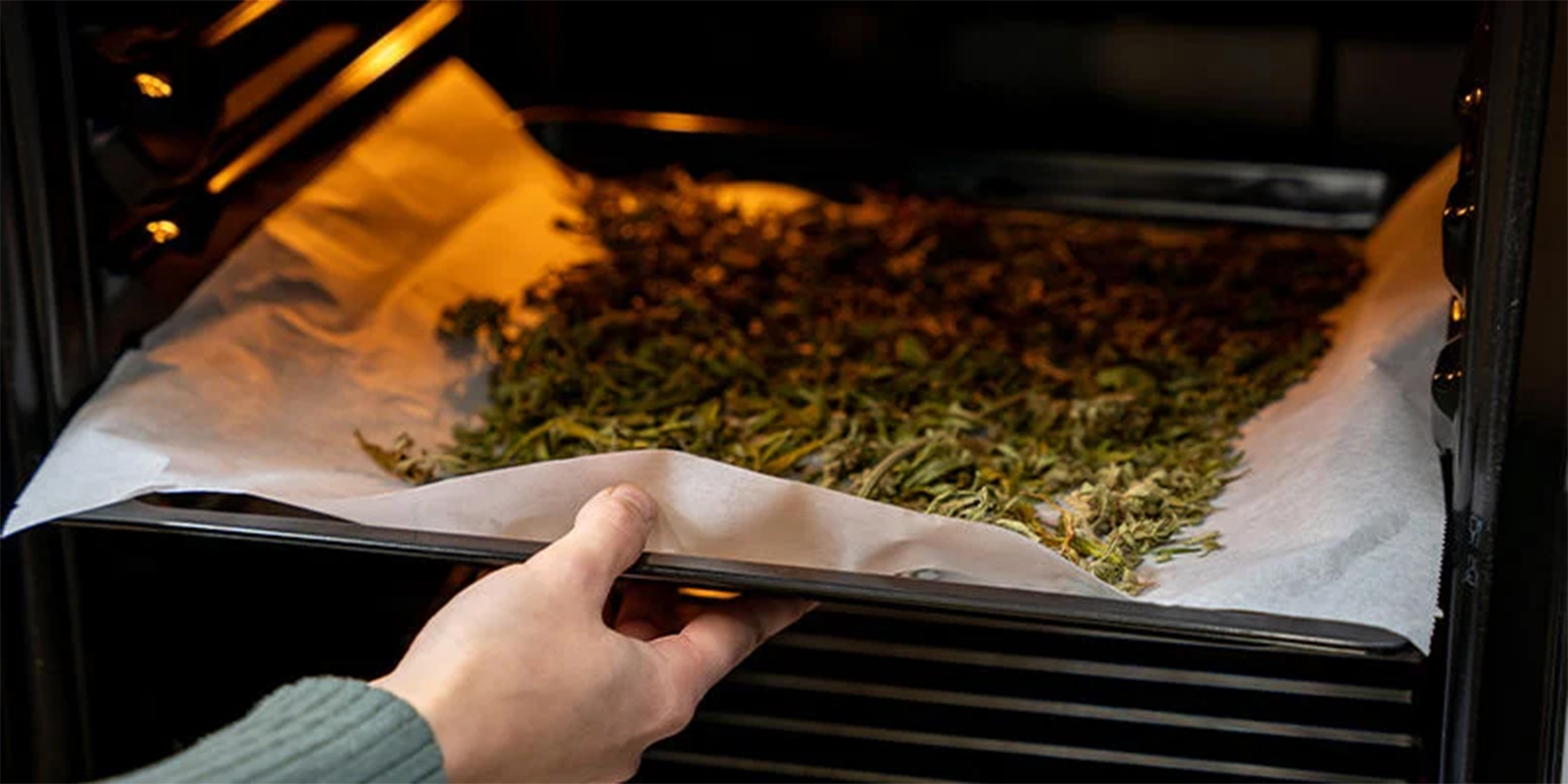
If your cannabis is already decarbed, skip this step. If not, here’s how to activate the compounds in your cannabis using decarboxylation:
Spread your ground cannabis evenly across the baking tray lined with parchment paper. Bake it at 110°C (230°F) for 30–45 minutes. This process is essential for activating the cannabinoids in your buds and making a potent tincture. Without decarbing, your cannabis tincture will have little to no effect.
Step 2: Infuse your solvent
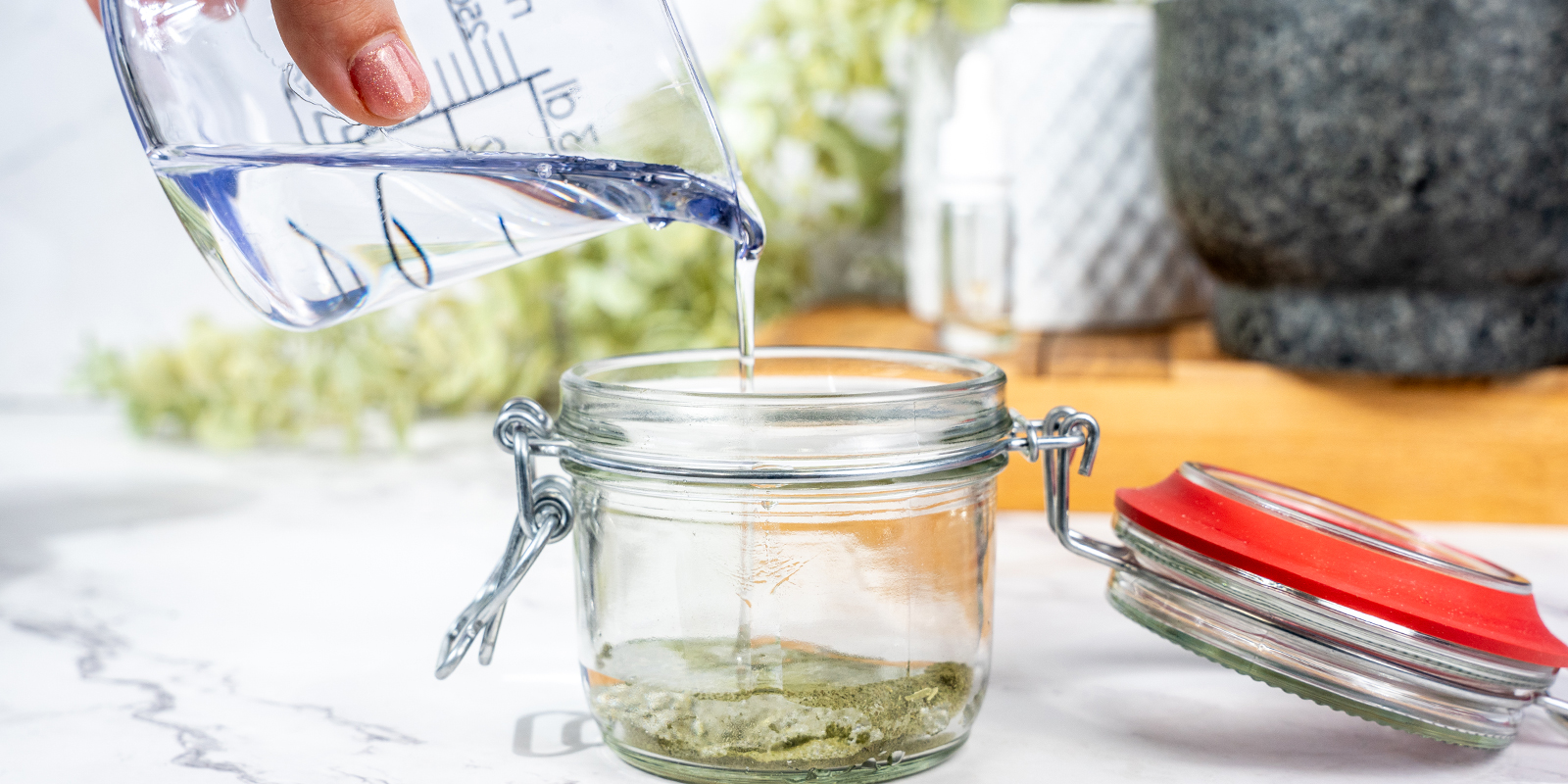
Place your decarboxylated cannabis in a clean mason jar, then cover it completely with your chosen solvent. Seal the jar tightly and store it in a cool, dark place for 6–8 weeks, shaking once daily to encourage infusion.
Using grain alcohol or Everclear produces a strong, efficient, and potent tincture. The high-proof alcohol extracts cannabinoids quickly and effectively.
If you’re wondering how to make non-alcoholic cannabis tinctures, use food-grade glycerine instead of alcohol. This makes for a sweeter mix; however, glycerine is less effective at extracting cannabinoids and terpenes, resulting in a tincture with milder effects.
For a faster extraction method, some people opt to percolate their tinctures, filtering alcohol through layers of cannabis for an immediate distillation. However, the long steeping method usually yields a smoother, more balanced product.
Step 3: Strain & filter
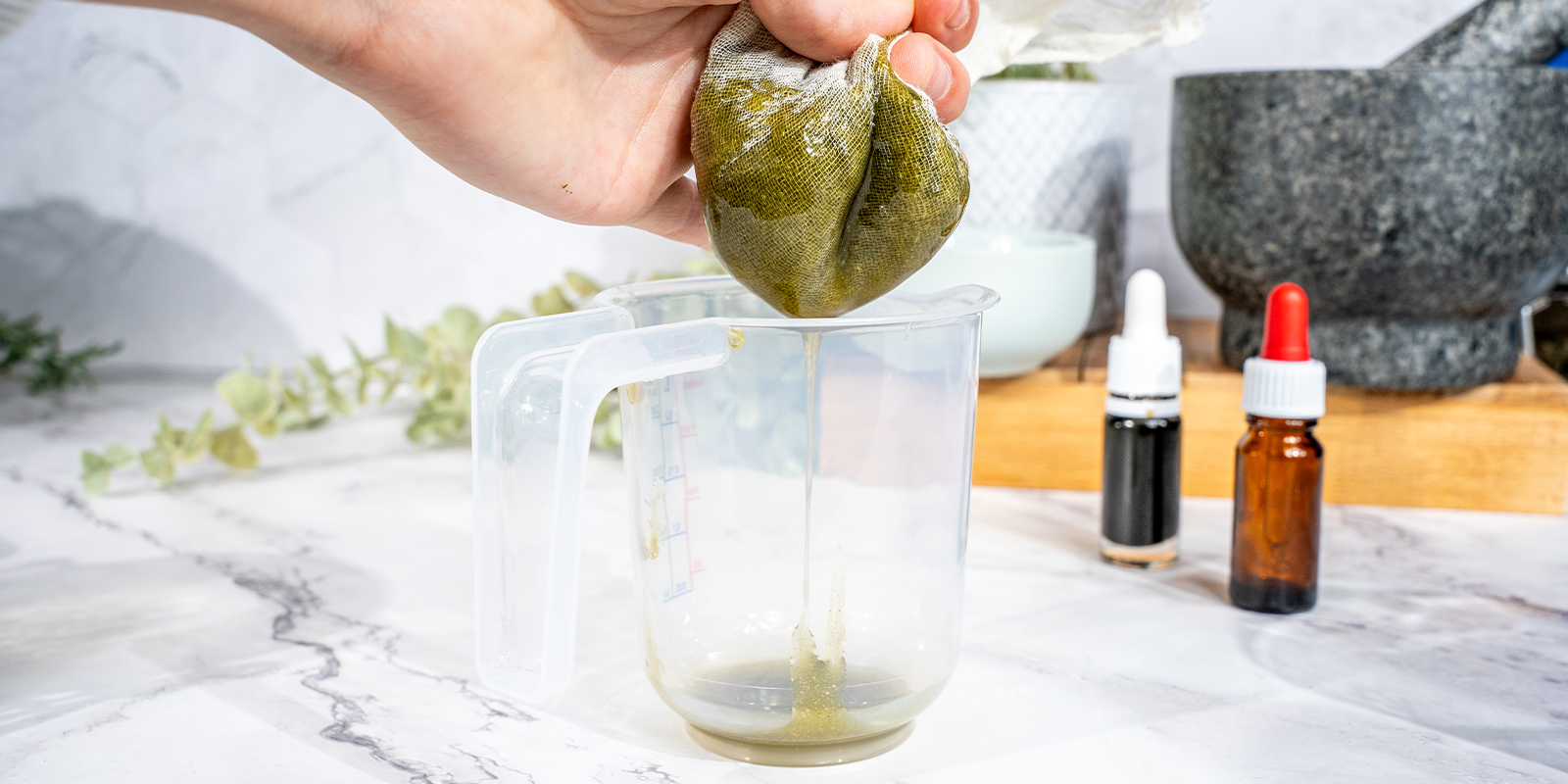
Once infused, strain the mixture through cheesecloth or a fine coffee filter to remove all the plant matter.
Step 4: Bottle & store
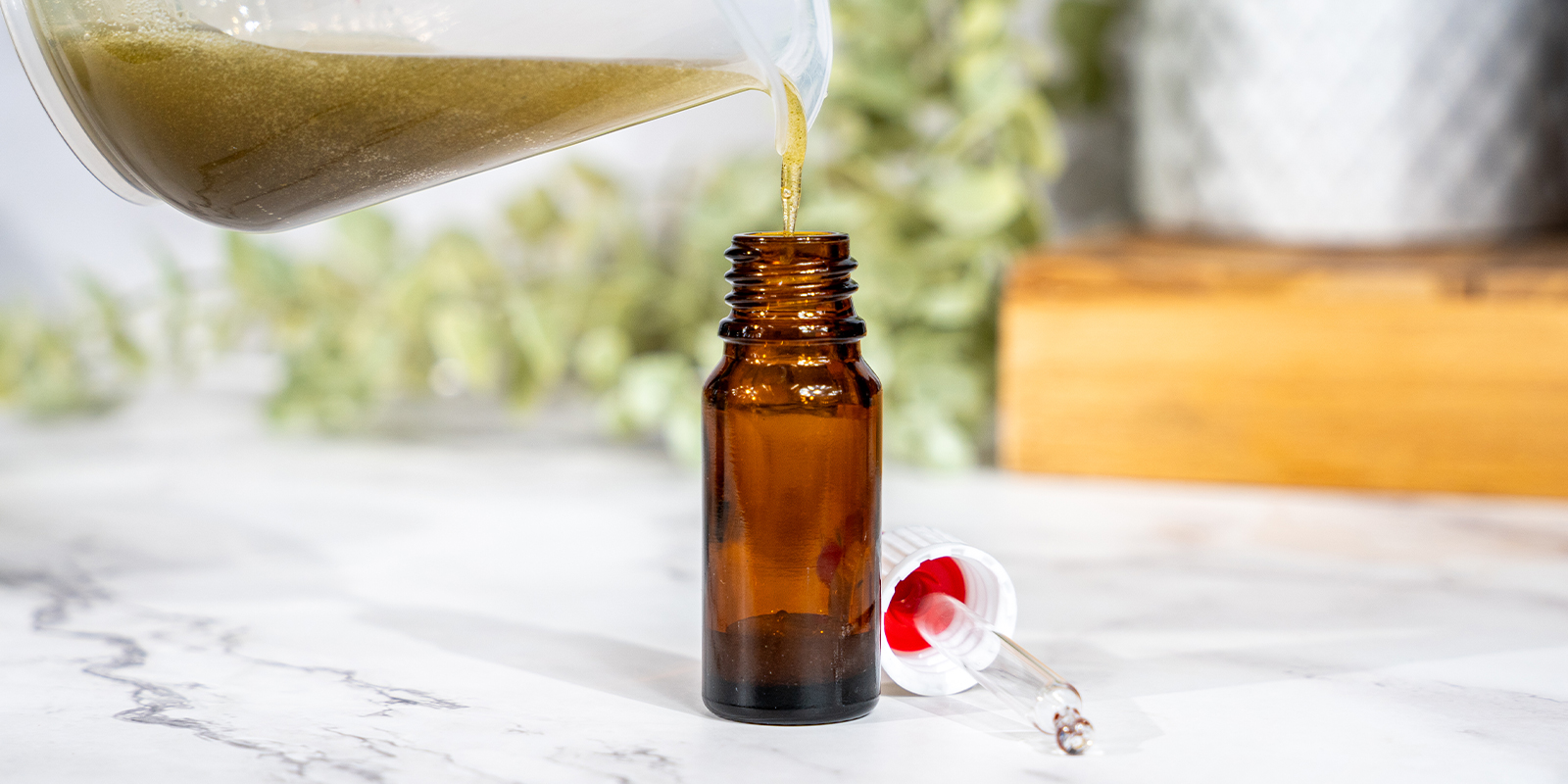
Use a funnel to pour the tincture into dark glass dropper bottles. Store your tincture in a cool, dark place to maximise its shelf life and potency. Properly stored, a cannabis tincture can last for years.
Variations to try
One of the best things about making tinctures is that you can experiment with different methods and flavours to suit your taste and lifestyle. Here are a few options to try.
Slow cooker method
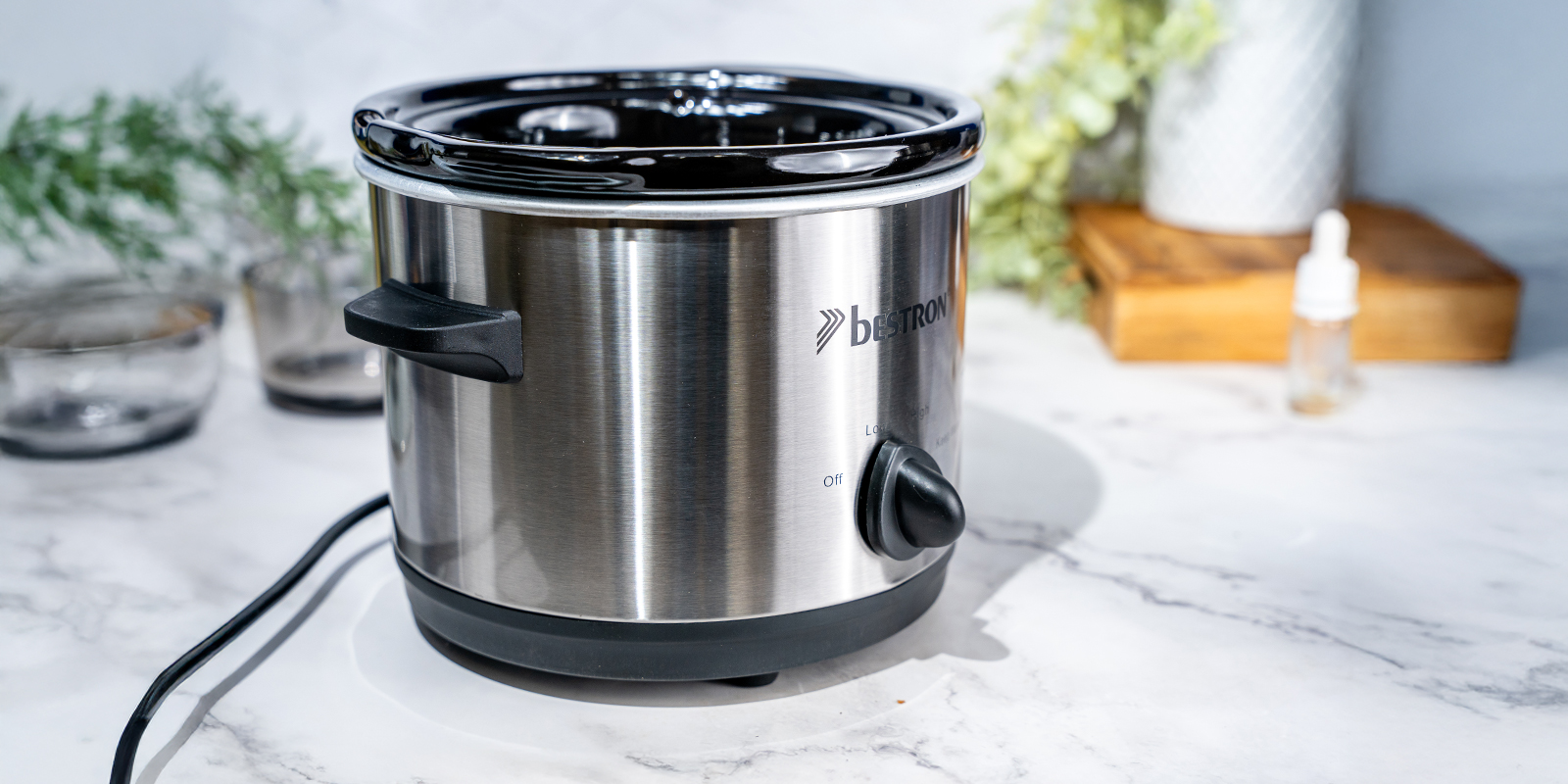
Combine your cannabis with glycerine and cook it on low heat for several hours in a slow cooker, stirring occasionally. This results in a sweet and mild alcohol-free tincture.
Hybrid method
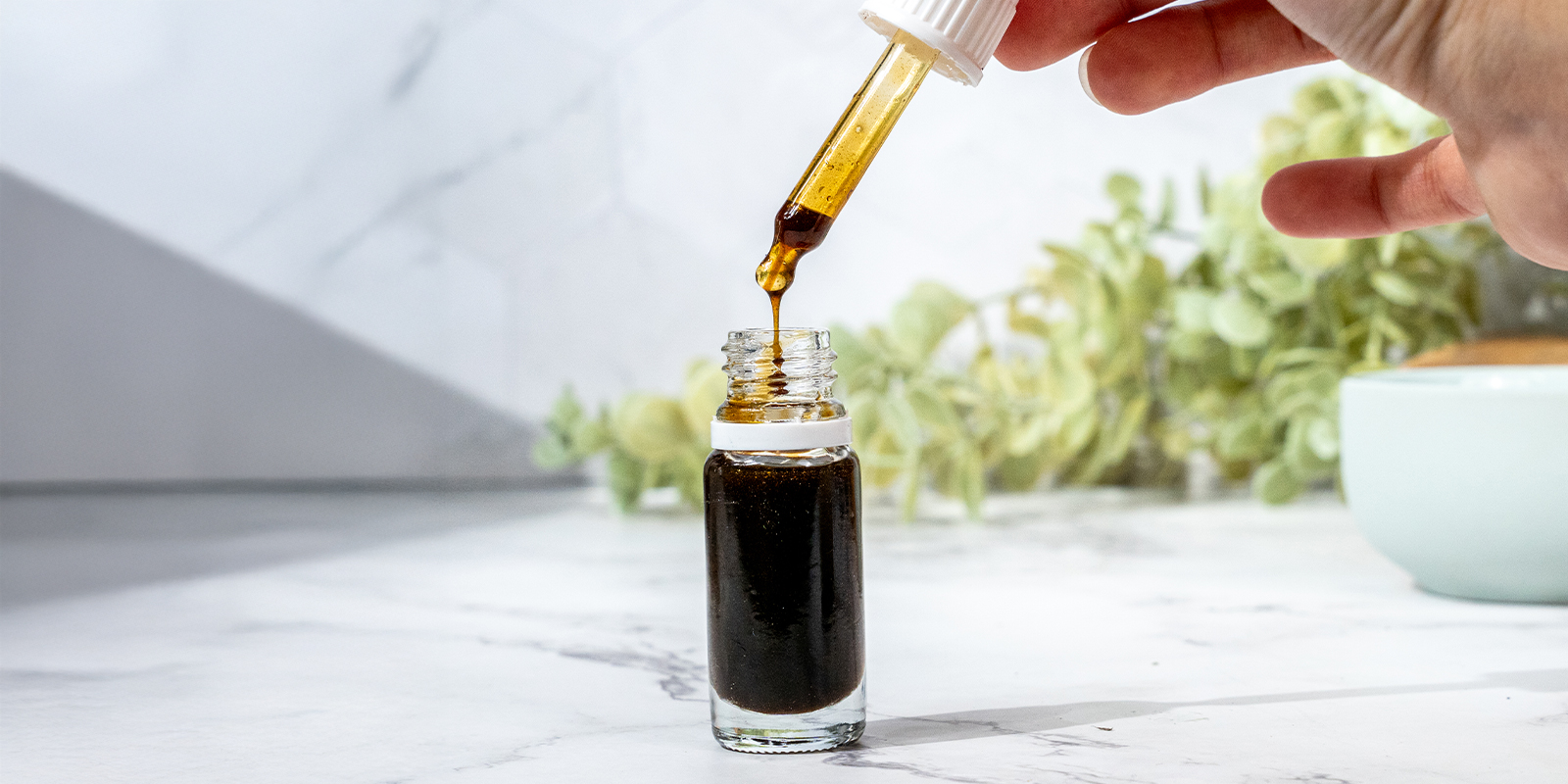
Combining alcohol and glycerine produces a tincture that’s potent (thanks to alcohol’s efficiency at extracting cannabis compounds) and sweet-tasting (thanks to the glycerine).
To make a hybrid tincture, start with an alcohol extraction. Next, slowly cook the tincture to evaporate the alcohol. Finally, add glycerine for a sweet, alcohol-free product that boasts all the potency of an alcohol-based extraction.
Flavoured tinctures
Want to customise your marijuana tincture further? Add flavourings like vanilla beans, cocoa nibs, or citrus peels during the infusion process for a more palatable extract.
Small bottles, big potential
Discreet, potent, and long-lasting, cannabis tinctures offer one of the easiest and most versatile ways to enjoy cannabis without smoking. Best of all, making tinctures at home is easy and lets you experiment with unique flavours and extraction methods.
Now it's your turn. Try this simple recipe at home, play around with different variations, and discover which tincture style works best for you.
Ready for more? Explore Zamnesia’s full range of cannabis recipes, from classics like weed brownies to other DIY extracts and infusions.

- France
- Germany
- International
- Italy
- Netherlands
- Polska
- Portugal
- Spain
- United Kingdom
- United States
Categories
Discover
Help & Info
Tools
Our website won't work without these cookies activated. Therefore functional cookies can't be disabled.

















